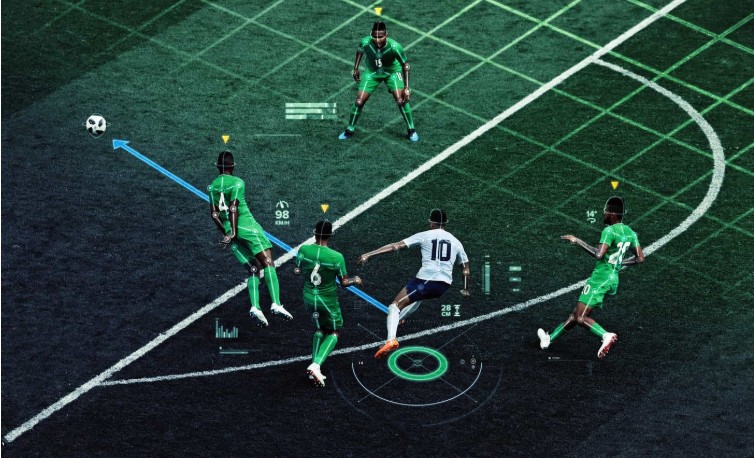
The data analyst has become an indispensable, behind-the-scenes force in modern football, transforming raw statistics into actionable insights that drive tactical decisions and recruitment strategies. This article, “The Role of the Data Analyst,” explores how these quantitative experts utilize advanced metrics and statistical models to evaluate player performance, identify tactical patterns, and pinpoint valuable transfer targets with unprecedented precision. From tracking passing networks and defensive pressures to assessing player value and predicting outcomes, understanding their pivotal influence reveals a crucial, evidence-based backbone of contemporary football management. To delve into the intricate science of football statistics, ufabet เว็บตรง 168 is your convenient tool.
More Than Stats: A Strategic Interpreter
A data analyst is far more than just someone who crunches numbers; they are a strategic interpreter, translating complex statistical patterns into clear, actionable intelligence. They are the analytical backbone, revealing hidden efficiencies, exposing vulnerabilities, and providing objective evidence to empower coaches, players, and recruitment teams with a deeper, data-driven understanding of the game.
The Role of the Data Analyst: Numbers Game
This article highlights how these quantitative experts utilize advanced metrics and statistical models to evaluate player performance, identify tactical patterns, and pinpoint valuable transfer targets with unprecedented precision:
1. Performance Evaluation and Player Assessment:
-
- Advanced Metrics (Expected Goals, Expected Assists, etc.): They move beyond basic stats (goals, assists) to analyze the quality of chances created and conceded (e.g., Expected Goals – xG, Expected Assists – xA), providing a more accurate picture of performance.
- Positional Analysis: They develop bespoke metrics and models to evaluate players based on their specific roles (e.g., a defensive midfielder’s interceptions and recoveries vs. a winger’s successful dribbles and crosses).
- Trend Identification: They analyze player performance over time to identify upward or downward trends, consistency, and potential for growth.
- Physical Metrics: They interpret physical data from GPS trackers (e.g., distance covered, sprint speed, high-intensity runs) to assess fitness levels and manage load.
2. Tactical Analysis and Opponent Scouting:
-
- Pattern Recognition: They identify recurring tactical patterns in both their own team’s play and that of opponents, such as preferred attacking zones, defensive weaknesses, or set-piece routines.
- Pressing Metrics: They analyze defensive pressure, turnovers, and ball recoveries to assess the effectiveness of a team’s pressing scheme.
- Possession Analysis: They go beyond simple possession percentage to analyze where and how possession is maintained, tempo of play, and progression of the ball up the pitch.
- Set-Piece Efficiency: They quantify the success rate of attacking corners or free-kicks, and the vulnerability of defensive ones.
- Pre-Match Briefings: They provide concise, data-backed insights to the coaching staff and players to aid in tactical preparation for upcoming matches.
3. Recruitment and Transfer Strategy:
-
- Player Profiling: They create detailed statistical profiles of potential transfer targets worldwide, identifying players who match the club’s specific needs and budget.
- Value Identification: They pinpoint undervalued players whose statistical output suggests they could perform at a higher level or for a lower cost than their market perception.
- Risk Mitigation: They use data to assess the potential success of a transfer, considering factors like injury history, age, and adaptability to a new league.
- Comparison Models: They develop models to compare players across different leagues and playing styles, providing objective benchmarks.
- Collaboration with Scouts: They work in tandem with traditional scouts and video analysts to combine qualitative and quantitative insights.
4. Strategic Planning and Decision Support:
-
- Long-Term Trends: They identify broader trends in football analytics and strategy that might inform the club’s long-term vision.
- Post-Match Review: They provide objective data to support post-match analysis, helping coaches understand why certain outcomes occurred.
- Injury Prevention: They analyze data on player load and performance to help medical teams identify players at higher risk of injury.
- Boardroom Reporting: They present data-driven insights to club executives to support strategic decisions related to investments, player contracts, and overall club performance.
Conclusion
The data analyst is an increasingly pivotal figure in modern football. They exemplify how these quantitative experts utilize advanced metrics and statistical models to evaluate player performance, identify tactical patterns, and pinpoint valuable transfer targets with unprecedented precision. By transforming raw data into actionable insights, they provide a crucial, evidence-based backbone for contemporary football management, empowering clubs to make smarter decisions on the pitch, in the transfer market, and in their long-term strategic planning.